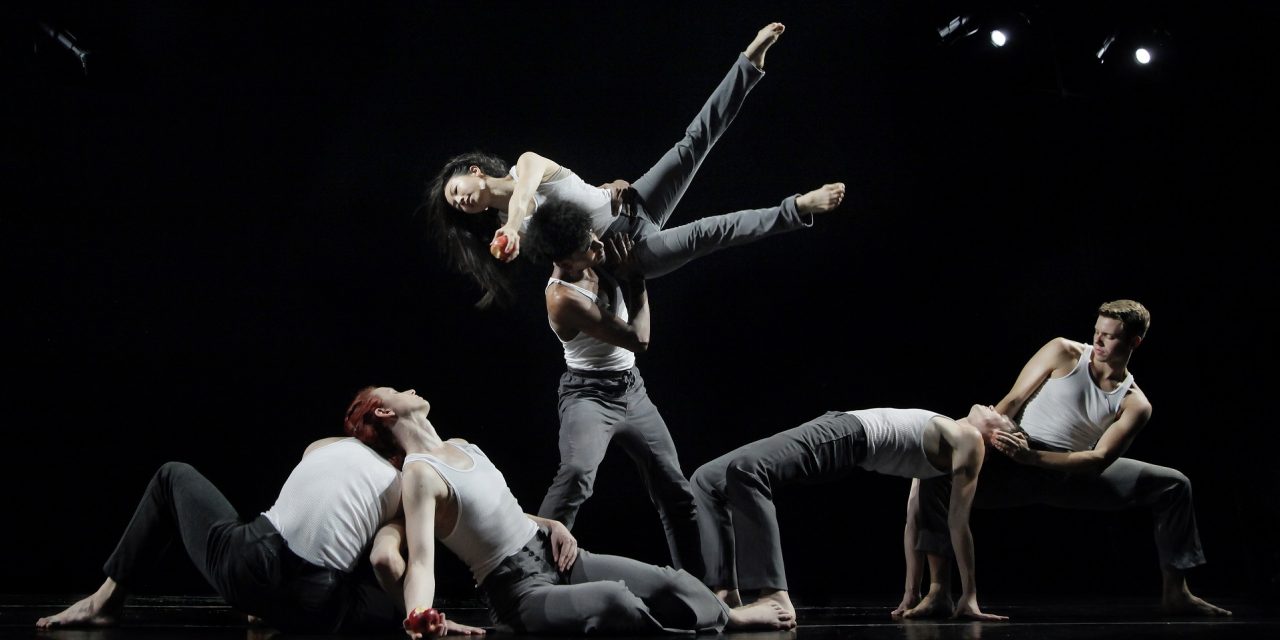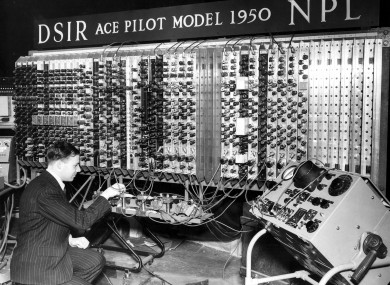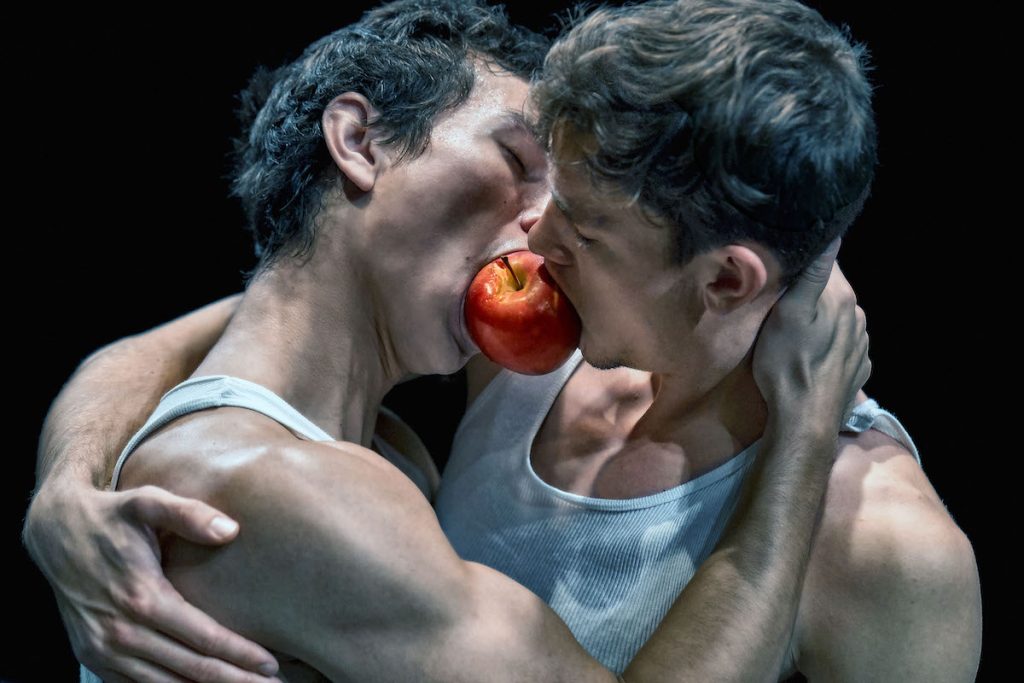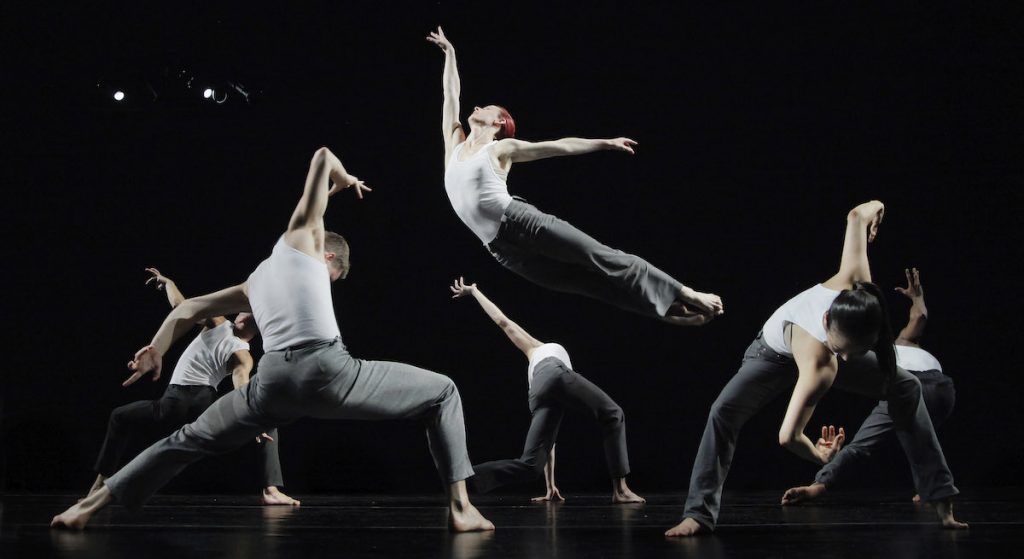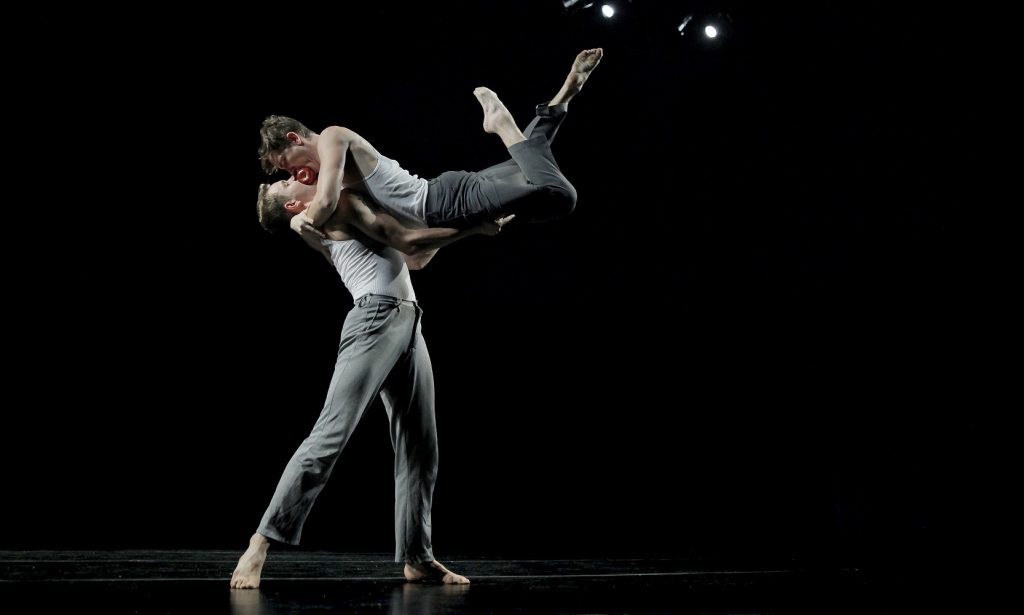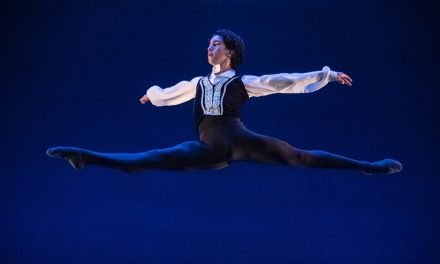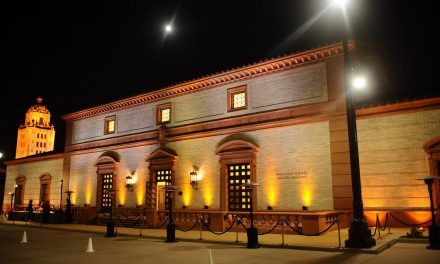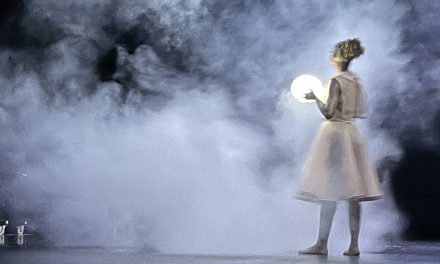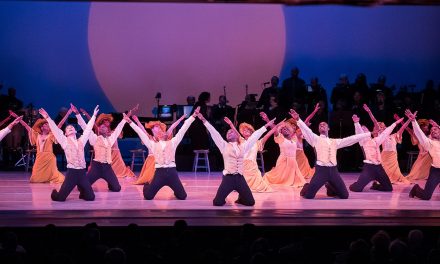“This story has no beginning.”
Cody Brunelle-Potter’s introductory words in Invertigo Dance Theatre’s Formulae & Fairy Tales, appearing this weekend at The Broad Stage in Santa Monica, capture the challenge of bringing to life an artistic dream years in the making. Company founder and artistic director Laura Karlin’s passion project is a healing ode to Alan Turing — the father of computer science. A man so far ahead of his time, he ignited a new era with his inventions — one we continue to live in today thanks to our obsession with technology. This was a quality he was able to predict with a quote Karlin has chosen to include in her show:
“One day ladies will take their computers for walks in the park and tell each other, ‘My little computer said such a funny thing this morning!’”
Turing was a visionary, a brilliant mathematician, an enigmatic codebreaker responsible for ending World War II years earlier than projected, and an LGBTQ victim forced to undergo chemical castration for being homosexual.
Most of us in the United States are familiar with Turing thanks to his portrayal by Benedict Cumberbatch in the Oscar-nominated “The Imitation Game” (2014). The film is fantastic, but unfortunately glosses over many of the details surrounding Turing’s tragic mistreatment. Karlin, however, knew his name and part of his history long before Hollywood brought him into our American living rooms.
“I grew up in a British household with a math and computer science nerd for a dad. Alan Turing is much more woven into the British consciousness. But I didn’t know an awful lot about his story.”
In 2007, Karlin heard an interview with Janna Levin about her book A Madman Dreams of Turing Machines (2006) where she discovered something new. Karlin was already aware of Turing’s persecution thanks to her university degree in Queer Rights and Social Movements, where she first read and wrote about state intervention in cases related to homosexuality. This predominantly involved the 1885 Labouchere Amendment, which criminalized homosexuality and made it punishable through hormone “therapy” or incarceration.
Turing was found guilty of “gross indecency” in 1952 and chose to receive “treatment” in the form of diethylstilbestrol (DES), a synthetic form of estrogen. The “medication” rendered him impotent and caused his body to develop secondary feminine characteristics, such as breast tissue.
Two years later, he took his life at the age of 41 by eating an apple laced with cyanide. The inspiration behind his selected method is widely believed to have come from his favorite movie — Snow White and the Seven Dwarves (1937).
“Dip the apple in the brew. Let the Sleeping Death seep through.”
The Evil Queen Grimhilde was noted as being the scientist’s favorite character. He could often be heard reciting the lines from her magic spell when trying to crack a difficult code or solve a challenging problem. The words stayed with him until the end of his life.
Karlin was floored when she first learned the details of his death while listening to Levin’s NPR interview in her car. She immediately pulled over to the side of the road and began writing about 10 pages of “thoughts and images and notes and questions,” which would become the blueprint for her aptly named Formulae & Fairy Tales.
Over time the work has become something of an expansive fever dream experience, which mixes with several ideas and components from Turing’s life with his beloved fable in order to draw parallels between the two. The 70-minute piece consists of roughly 26 scenes and transitions, all of which combined create a cohesive landscape of imagery that capture who Turing was, his interests, and the life he led.
The dancing is whimsical, yet kinetic and consists of roughly two components: exposition and a fanciful visualization. The seven performers (Brunelle-Potter, Hyosun Choi, Jessica Dunn, Spencer Jensen, Corina Kinnear, Dominique McDougal, and Luke Dakota Zender) take turns portraying characters from the animated film, Turing himself at different ages, memories of schoolyard children who isolated him and The London Blitz bombing that helped defined him, inanimate objects such as trees from which apples are picked, and much more.
When not embodying a character, their movement is symbolic of the mathematical calculations Turing made. These are dances made up entirely of binary code — 1s and 0s constructed with fingers and used to paint pictures such as binoculars and other objects related to sight. They are also code switches — outstretched arms that spin with perfectly timed precision, ticking and clicking to imitate the cogs and wheels of the first machines Turing built: the first computers.
The show’s several layers of intricacy and movement may seem like a lot to come together to tell one story, but it’s reflective of how the multifaceted aspect of dance can match how a person can also be so multifaceted.
“I have a lot of ideas. But I think Turing had a lot of ideas and I think that’s part of making this piece — it’s certainly not “Alan Turing the Ballet,” but it’s not a straight-forward biography [either]. In many ways I think it is either a love letter or a reflection of a mind and a life that took on so very much even though it was cut short. And, a life and a mind whose implications were so far reaching.”
Much of this falls in line with Invertigo’s style of magical realism, which follows patterns Karlin and the company members have constructed previously, in works such as “After It Happened” (2016). Less common for Invertigo is the expository side to the work, established with the intention of facilitating an understanding of Turing’s complicated world. It also serves to combine typically non-related elements such as math and science with dance in a way that could be accessible to a variety of people with varying interests.
“Even if you do know who Alan Turing is, you very well may not know what the Turing Test is, you may not know what a Turing machine is, may not even be super familiar with binary code or with queer histories, movements and activism. Or with dance in general. There are a lot of entry points to this show that are nontraditional, but there are also a lot of places where people could feel that the subject matter is esoteric or alienating. We thought a lot about…how to open doors and let people in and take away barriers of baseline knowledge.”
Karlin made sure to keep her exploration of many of the terms and methods Turing originated accessible, without feeling condescending to the audience. Several Turing Tests, which is a method used in Artificial Intelligence to determine whether a computer is capable of thinking like a human being, are performed throughout the expanse of the show. Their incorporation is educational while remaining fun. More importantly, however, they make a strong point about labels and fitting in. This becomes a theme that carries through different scenes within the dance piece. Another notable moment is the cast’s interpretation of words such as “queen,” “princess” and “witch,” which they explore in order to discover what the word represents across a variety of different groups — all without ever assigning anyone meaning to Turing himself.
Much of Karlin’s work this time around is reflective of a balancing act. For over two and a half years, Invertigo has been doing residencies and workshops where they have been showcasing part of her work in order to receive feedback from several communities, including dancers, scientists and queer activists.
“There’s sort of a ‘nothing about us without us’ mentality that we have. It’s been really rich opening that process up and hearing the different perspectives. Transparency and illumination and openness and community are all part of values that Invertigo holds very dearly and it’s really lovely to me that it’s played out within this process. I think the show is better for it.”
Part of the challenge for Karlin and her company however lay in the incorporation of a medium Invertigo had never experimented with before: video projections. Their inclusion became essential for telling both an artistic and practical side to the story. The design they used was a nod to Turing’s technology, which helped make these projections possible. Additionally, the projector is spit into several circular disks that are either lit individually or used as one solid background to compose a large image in order to resemble pixels. Invetigo’s collaboration with NightLight Labs, a “creative laboratory specializing in technology-driven interactive storytelling” and the advanced technicians at the Broad Stage have helped complement the dance and make her decade-long vision a possibility.
“I was waiting to work with the caliber of artistry and tech that could be available to me and I think I was also waiting to be the kind of artist that could hold space for the scope of these ideas and the incredible dancers that would be brought into the room and have the resources to make something like the show that I knew I wanted this to be.”
Karlin’s hope is that this show will not only speak to those communities he touched, but to also change or elaborate upon the image we have created about the man as either a rigid figure buried in code or just another tragic victim of anti-LGBT attitudes and legislation. Alan Turing was much more than that.
“He was so curious about the world around him — about something as tiny as the spiral in the development of a sunflower or something as cosmic as human and machine.”
Turing is often credited for inventing the computer and cracking the enigma but could not have accomplished half of what he had set out to do had it not been for his team of fellow codebreakers that helped make his dreams a reality. This show honors the collaborative human experience just as much as it does the accomplishments of a genius. Karlin reflects on how it took plenty of encouragement from friends, colleagues and her staff to start working on this long-awaited project which has finally come to fruition.
“They very kindly and very firmly pushed me off a cliff and helped me build wings on the way down. I want to be so clear about the incredible gift and the support that this show has had around it and that Invertigo has cultivated. No artist makes art in a vacuum and we all are beholden to the support structures around us.”
Invertigo Dance Theatre’s Formulae & Fairy Tales premieres at the Broad Stage in Santa Monica for two nights on September 13 and 14.
Written by Lara J. Altunian for LA Dance Chronicle, September 12, 2019
To purchase tickets for Formulae & Fairy Tales, click here.
To visit Invertigo Dance Theatre’s website, click here.
Featured image: Invertigo Dance Theatre – Formulae & Fairy Tales – Photo by Joe Lambie

